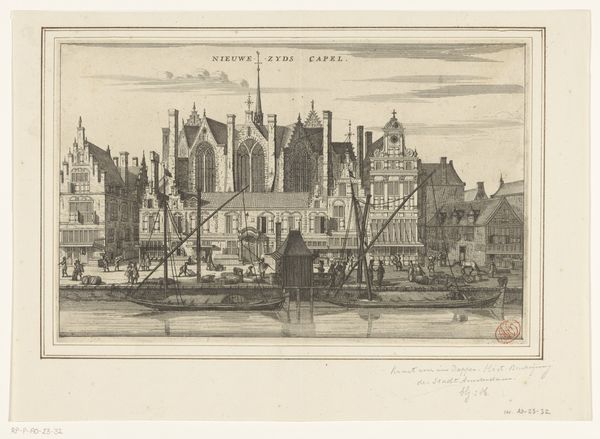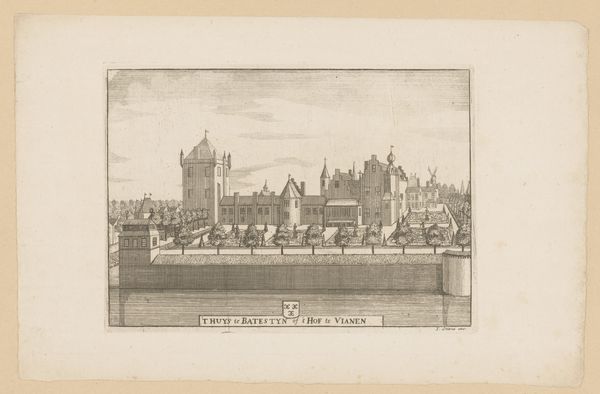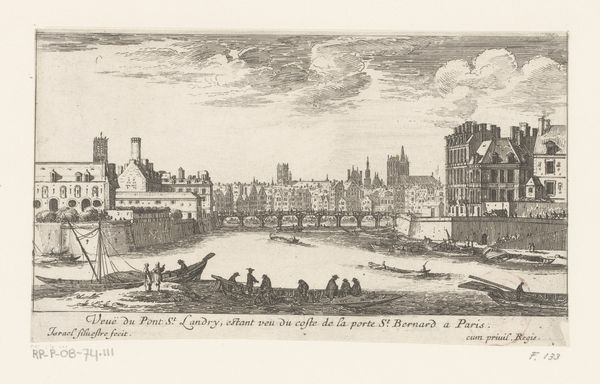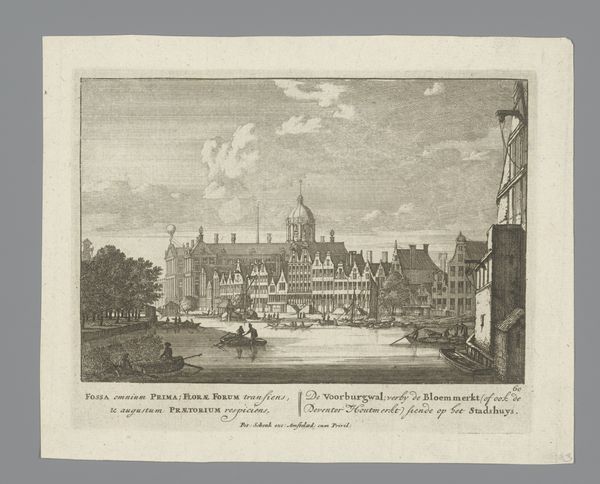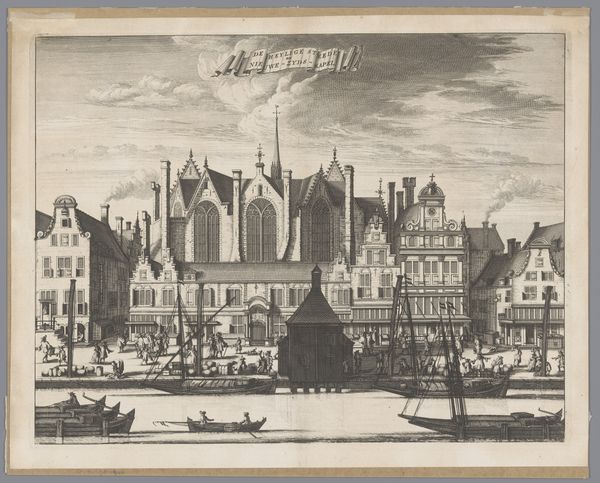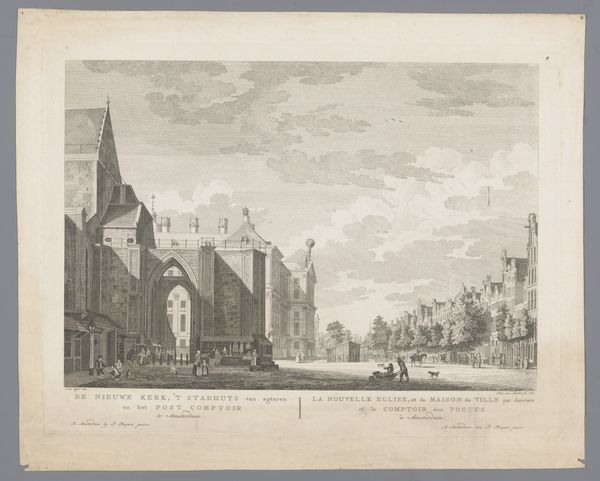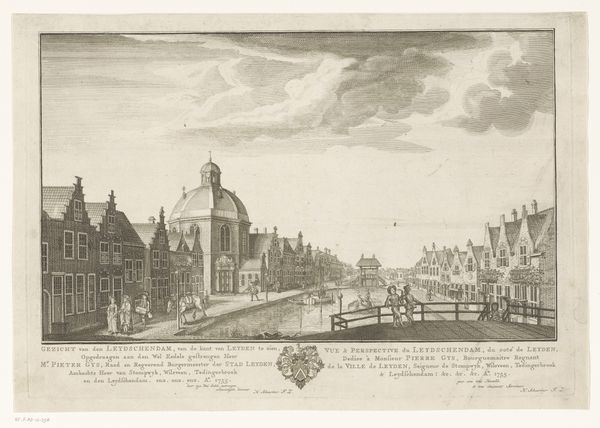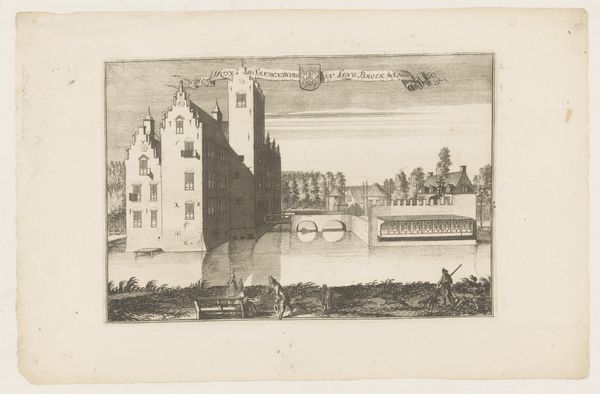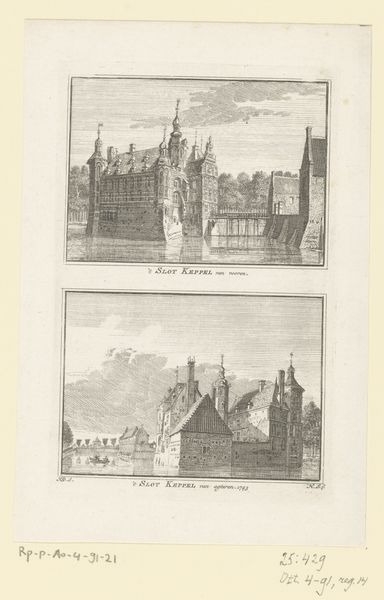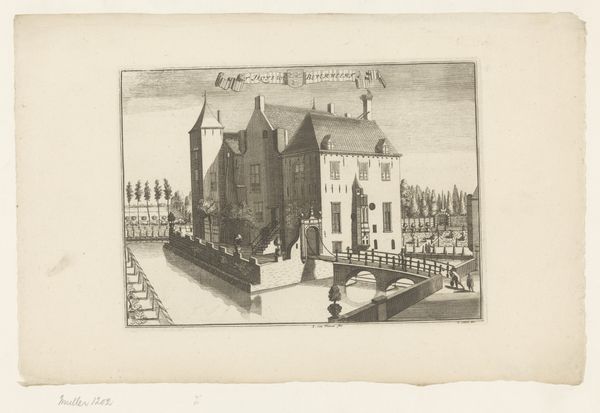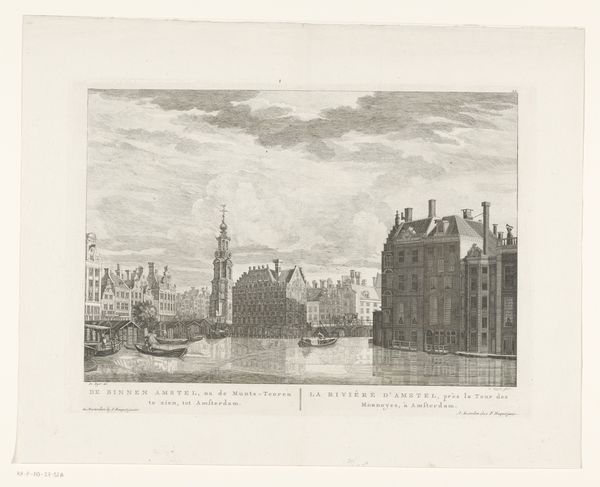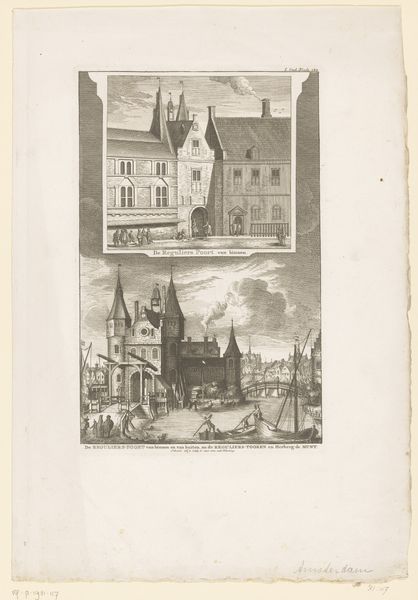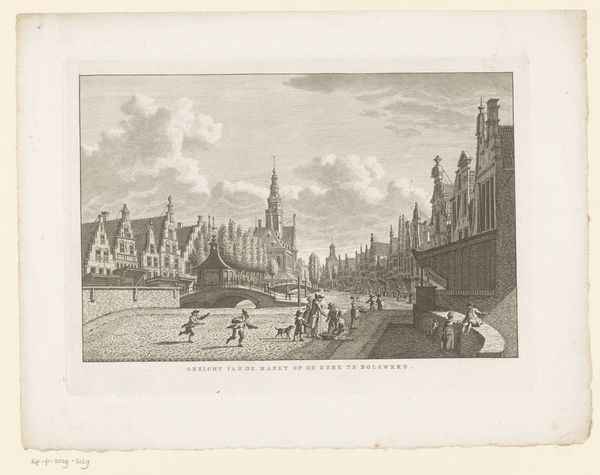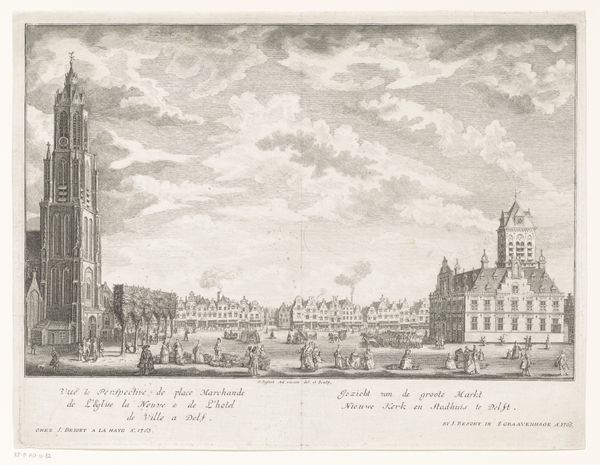
etching
#
dutch-golden-age
#
etching
#
landscape
#
etching
#
cityscape
Dimensions: height 174 mm, width 285 mm
Copyright: Rijks Museum: Open Domain
Editor: This is "Gezicht op de Kloveniersdoelen te Amsterdam," an etching made around 1663-1664 by Jacob van Meurs. It’s a beautiful, detailed cityscape. What particularly strikes me is the intricate texture created by the etching process; it feels almost like looking at woven fabric. What do you see in this work, from your perspective? Curator: It’s more than just a beautiful cityscape; it’s a record of labor, consumption, and material culture. This etching, as a reproducible image, speaks volumes about the democratization of art and information in the 17th century. We need to think about the socio-economic context: who was buying these prints? How did the act of making and distributing such an image impact the perception of Amsterdam and its institutions? Editor: That’s interesting, I hadn’t considered the print’s wider implications. So, the image becomes part of the city’s branding, in a way? Curator: Precisely. Consider the paper itself – its production, its cost. Etchings allowed for the mass production and consumption of images. Think about the labor involved – the etching itself, the printing, the distribution networks. The materiality is so important. Can we look beyond the aesthetic and examine how this work exists as a product? How its availability shapes not just visual culture, but also societal values? Editor: So, it’s not just about what's depicted, but also about the social life of the print itself and how that impacts its interpretation? I’m starting to see the layers. Curator: Exactly! Looking at it from a materialist point of view, we delve into the hidden systems of production and consumption. Editor: That is so fascinating; thank you! This completely changes my perspective on how to approach even the simplest etching.
Comments
No comments
Be the first to comment and join the conversation on the ultimate creative platform.
